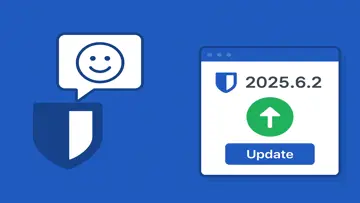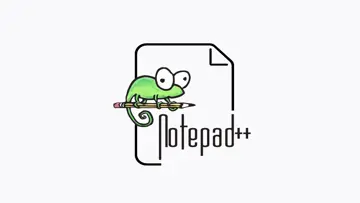Effortless Plotting with PLplot
PLplot offers a versatile and powerful plotting library that simplifies the creation of high-quality graphics in various programming environments, making it a go-to tool for scientists and engineers alike.
Overview of PLplot
PLplot is a powerful plotting library designed primarily for creating scientific and technical graphics. Developed by Werner Smekal, this open-source software provides users with a versatile platform to produce a wide array of visualizations, catering to both simple and complex data representation needs.
Key Features
- Multilingual Support: PLplot supports multiple programming languages including C, C++, Fortran, Perl, and Python. This makes it accessible to a wide range of developers and data scientists.
- Multi-Platform Compatibility: The library is compatible with various operating systems such as Windows, macOS, and Linux, ensuring that users can implement it regardless of the platform they prefer.
- Multiple Output Formats: PLplot can generate output in different formats such as PNG, SVG, PDF, and PostScript. This flexibility allows users to choose the format that best suits their needs for presentation or publication.
- Built-in Plot Types: The library provides a rich assortment of built-in plot types including line plots, scatter plots, histograms, 3D plots, and more. This variety supports comprehensive data analysis and exploration.
- Customization Options: Users have a significant amount of control over the appearance of their plots. PLplot offers extensive customization options for axis labels, legends, grid lines, and colors.
- Integration Capabilities: PLplot allows for easy integration with existing codebases, enabling developers to add plotting functionalities without major overhauls.
Installation Process
The installation of PLplot is straightforward. Users can obtain the library through its official website or by using package managers relevant to their operating systems. The steps generally include:
- Download the latest version from the official PLplot website.
- Extract the files to a preferred directory.
- Run the compilation commands as per the provided guidelines for your specific programming environment (e.g., using CMake or Makefile).
- Verify that the installation was successful by running sample scripts included in the package.
User Interface
While PLplot does not offer a dedicated graphical user interface (GUI), its API is designed to be intuitive for developers familiar with programming concepts. The focus is on enhancing usability through well-documented functions that simplify plotting tasks. Sample code snippets are provided in the documentation, making it easier for new users to create their first plots swiftly.
Performance
One of the standout aspects of PLplot is its performance efficiency, particularly when handling large datasets. It utilizes optimized algorithms which allow for fast rendering without sacrificing quality. The library effectively manages memory allocation and deallocation during plotting operations which results in smooth execution even when plotting complex graphics.
Documentation and Community Support
The documentation provided with PLplot is comprehensive and includes numerous examples that cater to various use cases. Users can find detailed descriptions of functions, parameters, and potential outcomes which significantly aids in learning how to utilize the library effectively. Additionally, there is an active community comprising users and developers who contribute to forums and mailing lists where one can seek help or share experiences.
Use Cases
PLplot is particularly well-suited for:
- Scientific Research: Researchers in fields such as physics, chemistry, biology, and engineering utilize PLplot to visualize experimental results accurately.
- Astronomy: Astronomers often rely on PLplot for representing celestial data due to its ability to handle complex datasets efficiently.
- Epidemiology Studies: Public health professionals use PLplot for data visualization related to disease patterns over time.
- Machine Learning Experiments: Data scientists leverage PLplot for visualizing training results and analyzing algorithm performance.
Frequently Asked Questions
- Is PLplot free to use?
Yes, PLplot is an open-source library under the GNU General Public License. - Can I create 3D plots using PLplot?
Absolutely! PLplot supports multiple styles of 3D plotting. - Aren’t there accessibility issues with API?
While there is no GUI provided by default, many find the API accessible if they have prior programming experience.
If you are looking for a reliable plotting library that balances performance with a rich feature set across multiple programming languages and platforms, then PLplot by Werner Smekal stands out as a strong contender. Its extensive documentation coupled with robust community support ensures that both novice and advanced users can effectively harness its capabilities for their data visualization needs.
Overview
PLplot is a Open Source software in the category Development developed by Werner Smekal.
The latest version of PLplot is currently unknown. It was initially added to our database on 10/16/2009.
PLplot runs on the following operating systems: Windows.
PLplot has not been rated by our users yet.
Pros
- Cross-platform compatibility, allowing for use on various operating systems including Windows, macOS, and Linux.
- Supports a wide range of output formats including PNG, PDF, SVG, and more, which provides flexibility for presentations or publications.
- Rich set of features for creating 2D and 3D plots, offering versatility for different types of data visualization.
- Highly customizable plots to suit specific needs, allowing users to modify axes, labels, colors, and more.
- Active community and available documentation make it easier for users to find help and resources for troubleshooting.
Cons
- Steeper learning curve compared to more intuitive plotting libraries like Matplotlib or ggplot2 due to its more complex API.
- Limited support for interactivity in plots compared to modern libraries that offer interactive features out of the box.
- Documentation can sometimes be lacking in detail or clarity, making it challenging for newcomers to understand all features effectively.
- Less popular than some other plotting libraries, which may result in fewer community-contributed resources or examples.
FAQ
What is PLplot?
PLplot is a cross-platform software package for creating scientific plots. It supports multiple file formats and output devices.
Who created PLplot?
PLplot was created by a team of developers, with Werner Smekal being one of the key contributors.
Is PLplot open source?
Yes, PLplot is an open-source project released under the LGPL license.
What programming languages are supported by PLplot?
PLplot can be used with several programming languages, including C, C++, Fortran, Python, and Tcl.
Can PLplot be used for 3D plotting?
Yes, PLplot supports 3D plotting capabilities, allowing users to create three-dimensional visualizations.
Is PLplot actively maintained and updated?
Yes, the PLplot project is actively maintained with regular updates and contributions from the community.
What platforms are supported by PLplot?
PLplot is designed to be cross-platform and is compatible with various operating systems like Windows, Linux, and macOS.
Are there examples and documentation available for using PLplot?
Yes, PLplot provides comprehensive documentation and examples to help users get started with creating plots and visualizations.
Can I contribute to the development of PLplot?
Yes, PLplot is an open-source project, and contributions from the community are welcome. You can contribute code, report bugs, or suggest improvements.
Does PLplot support interactive plotting?
PLplot provides interactive plotting capabilities in some environments, allowing users to interactively explore and manipulate their plots.

Elena Angelini
I'm Elena, your go-to software reviewer at UpdateStar and tech enthusiast. Whether you're a user seeking the latest software titles or software news I've got you covered. When I'm not diving into the latest software, you can find me exploring nature trails, camping under the stars, or competing in online multiplayer games. My reviews are designed to be fun, engaging, and packed with all the details you need to make informed decisions.
Latest Reviews by Elena Angelini
Latest Reviews
|
Transfuser
Unlock Your Creative Potential with Transfuser |
|
|
JL Sussex Advent Calendar
Unwrap Daily Surprises with the JL Sussex Advent Calendar |
|
|
|
Koodo Reader
Koodo Reader: A Comprehensive Tool for Digital Reading |
|
|
StarPlayerAgent
Enhance your multimedia experience with StarPlayerAgent! |
|
PowerColor DevilZone
PowerColor DevilZone: A Graphics Card for the Bold |
|
|
|
Open Visual Traceroute
Visualize Your Network with Open Visual Traceroute |
|
|
UpdateStar Premium Edition
Keeping Your Software Updated Has Never Been Easier with UpdateStar Premium Edition! |
|
|
Microsoft Edge
A New Standard in Web Browsing |
|
|
Google Chrome
Fast and Versatile Web Browser |
|
|
Microsoft Visual C++ 2015 Redistributable Package
Boost your system performance with Microsoft Visual C++ 2015 Redistributable Package! |
|
|
Microsoft Visual C++ 2010 Redistributable
Essential Component for Running Visual C++ Applications |
|
|
Microsoft OneDrive
Streamline Your File Management with Microsoft OneDrive |





